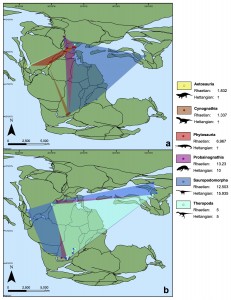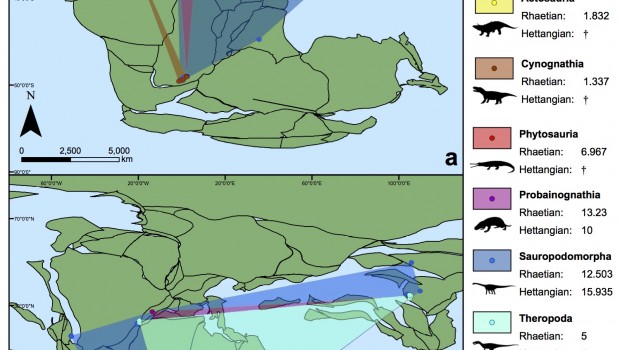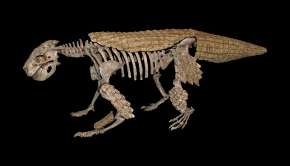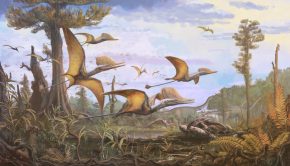Triassic-Jurassic Extinction
A new study out today looks at the question of whether or not geographically widespread species are less likely to become extinct, using the Triassic-Jurassic boundary extinction event. Alex Dunhill from the University of Leeds had this to say about the study:
“In general, geographically widespread animals are less likely to become extinct than animals with smaller geographic ranges. However, during global mass extinction events, widely distributed animals are as likely to suffer extinction as those with restricted geographic distributions.Ecological theory states that a large geographic range, spanning multiple ecosystems, offers insurance against regional environmental catastrophes. However, during mass extinctions when environmental catastrophes affect the entire globe, it is claimed that this insurance is likely to become ineffectual.
Our new study, published today in Nature Communications, explores the relationship between geographic range and extinction in the fossil record of terrestrial vertebrates from the Triassic and Jurassic periods (252-145 million years ago). Organisms with larger geographic ranges were less likely to become extinct than those with smaller ranges during most of the Triassic-Jurassic. However, this pattern disappears near the Triassic-Jurassic boundary (around 200 million years ago) when the world experienced a catastrophic mass extinction event associated with massive volcanic eruptions and rapid climate change which caused the demise of around 80% of species on the planet.
The fact that the insurance against extinction given by a wide geographic distribution disappears at a known mass extinction event is an important result. Many groups of crocodile-like animals become extinct at the end-Triassic mass extinction event, despite being really diverse and widespread throughout the Triassic. In contrast, the dinosaurs which were comparatively rare and not as widespread pass through the extinction event and go on to dominate terrestrial ecosystems for the next 150 million years.
These results shed light on the likely outcome of the current biodiversity crisis caused by human activity. It appears a human-driven sixth mass extinction will affect all organisms, not just currently endangered and geographically restricted species.”
Co-author Matthew Wills added: “Our study shows that the ‘rules’ of survival at times of mass extinctions are very different from those at ‘normal’ times: nothing is ever really safe!”
If you’re interested in learning more about the modern biodiversity crisis and how the fossil record can help us understand it, check out Episode 46: Understanding biodiversity with Dr. Lindsey Leighton.

Geographic range maps and mean generic diversity of terrestrial vertebrate groups before (a) and after (b) the end-Triassic mass extinction. Dunhill and Wills 2015.


















